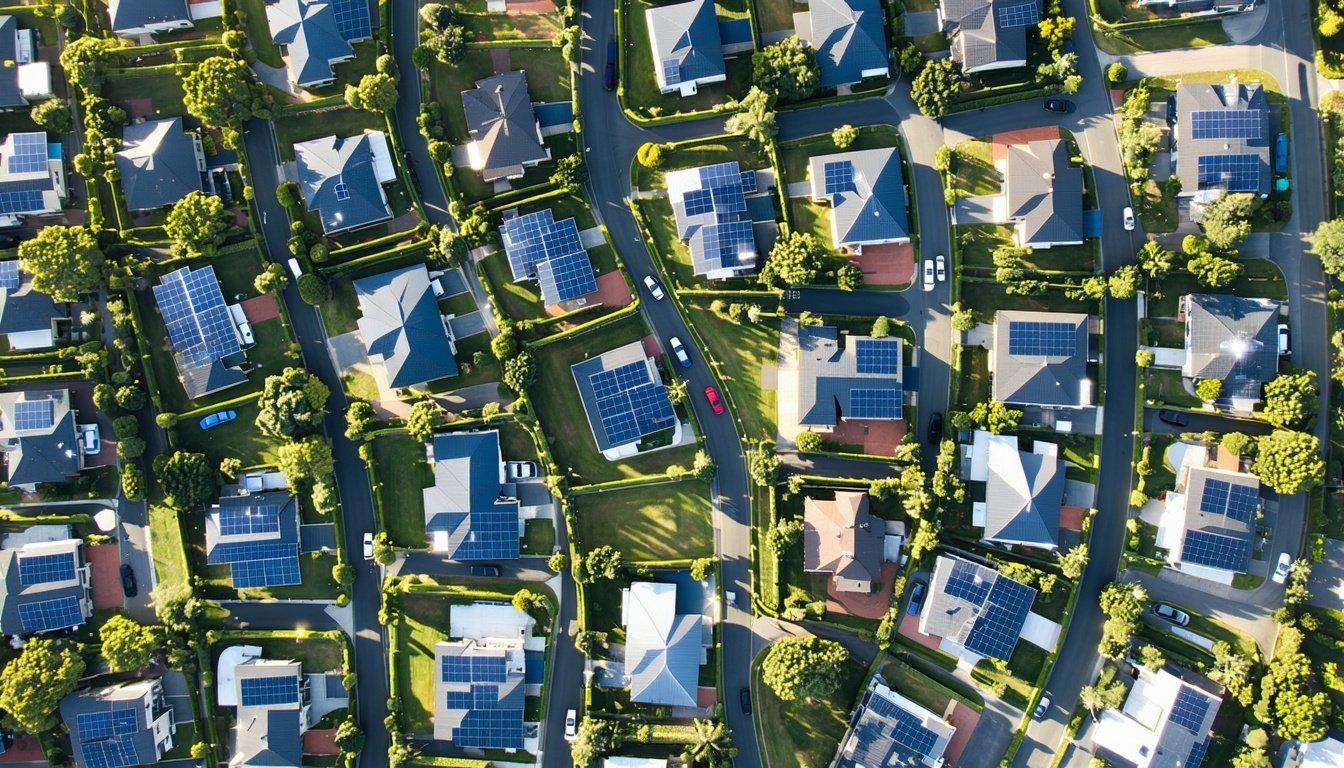Your Roof, Your Grid: How Prosumers Monetise Megawatts with DePIN

In October 2019 a modest cul-de-sac in Adelaide kept the lights on for 30 000 neighbors when a 748-MW coal unit tripped. The heroes weren’t line-workers, they were hundreds of ordinary homes whose rooftop panels and Tesla batteries, stitched together as a virtual power plant (VPP), pushed power back into the grid within seconds. Across Europe, households already own more than 170 GW of rooftop solar, about the output of ten nuclear reactors.
DePIN — Decentralised Physical Infrastructure Networks — wants to turn that silent hardware into active, citizen-run power stations.
The Rooftop Revolution
Picture every solar panel, battery, and EV charger on your street as a LEGO brick. Alone each brick is tiny; snapped together they rival a utility-scale plant. The 170 GW figure shows the bricks are already in place. What’s missing is a way to click them together and reward the owners—exactly what DePIN sets out to do.
From Hotspots to Hot Watts
We’ve seen bottom-up infrastructure before. Helium paid volunteers in crypto-tokens to host Wi-Fi hotspots and, in two years, rolled out hundreds of thousands of devices. In mid-2022 public blockchain data showed IoT firms were buying only US $6 500 of data credits per month; since Helium’s 2023 move to Solana the figure has surpassed US $2 million cumulative, though sustained commercial demand is still debated.
Energy flips the script because the demand is obvious: everyone needs electricity. South Australia’s 50 000-home virtual power plant behind our opening anecdote proves that when households aggregate their batteries they can deliver grid-scale services and get paid in hard currency.
The Three Pillars of DePIN-for-Energy
| Pillar | Plain-language meaning | Everyday example |
| Generation | Little power sources you already own | Rooftop solar, a backyard wind-turbine |
| Storage | Cheap places to stash spare power | Home batteries, a parked EV |
| Coordination | Software that decides who shares what, when | A phone app that pays you more to export at 7 p.m. than at noon |
Coordination is where tokens come in: they let the software handle micro-payments and security automatically, so nobody waits months for a paper cheque.
Why It Matters to You
- Lower bills – A peer-to-peer trial in Fremantle (18–40 homes) found average bill cuts of ≈ 6 %, rising to ≈ 23 % for households that had both solar and batteries.
- Greener, faster – Because citizens fund the hardware, panels and batteries appear years before centrally-planned upgrades.
- Fewer blackouts – The Adelaide incident shows distributed batteries can restore grid frequency faster than gas turbines.
- For the climate-conscious, every self-funded rooftop kilowatt displaces fossil peaker generation; for the finance-minded, faster payback on existing hardware is hard to ignore.
Hard Lessons from the Pioneers
| Mis-step | What happened | Take-away |
| Helium’s “empty network” | Thousands bought hotspots; real data traffic stayed tiny until late 2023, when usage began to climb after the network overhaul. | Build where demand is proven—keeping lights on beats tracking lost pets. |
| Speculative solar tokens | Some early projects cared more about coin price than kilowatts delivered. | Peg rewards to verified energy, not hype. |
| Utility distrust | Operators fear millions of devices they can’t control. | Win them over with reliability first—like Tesla’s VPP did during the coal trip. |
👉 If the token price makes bigger headlines than the power stats, step back!
What’s Coming Next
| Horizon | Everyday snapshot |
| 1 year | Neighbors form micro-grids that share lunchtime solar across the block. |
| 3 years | The gateway linking your inverter to the grid also hosts an air-quality sensor and an AI chip, each earning pocket money. |
| 5 years | Parking your EV finances the local school’s battery through pay-per-second power swaps settled in milliseconds. |
These are scenarios, not guarantees. Most DePIN energy projects are still early-stage pilots. Energy is just the beachhead. Once rooftops become cash-generating nodes, other sensors and computing tasks can hitch a ride.
Learn More—Join the Conversation
Curious? DePIN.Sparx Energy gathers builders and researchers in Zurich on 26 June 2025.
Experience live keynotes, connect with innovators, and explore whether your rooftop—or your next venture—will be part of the emerging movement.
➡️ Free registration: https://lu.ma/DePIN.Sparx-Energy02
Bottom Line
The energy transition isn’t waiting for policy memos. It’s assembling itself, panel by panel and battery by battery, on the rooftops we already own.
